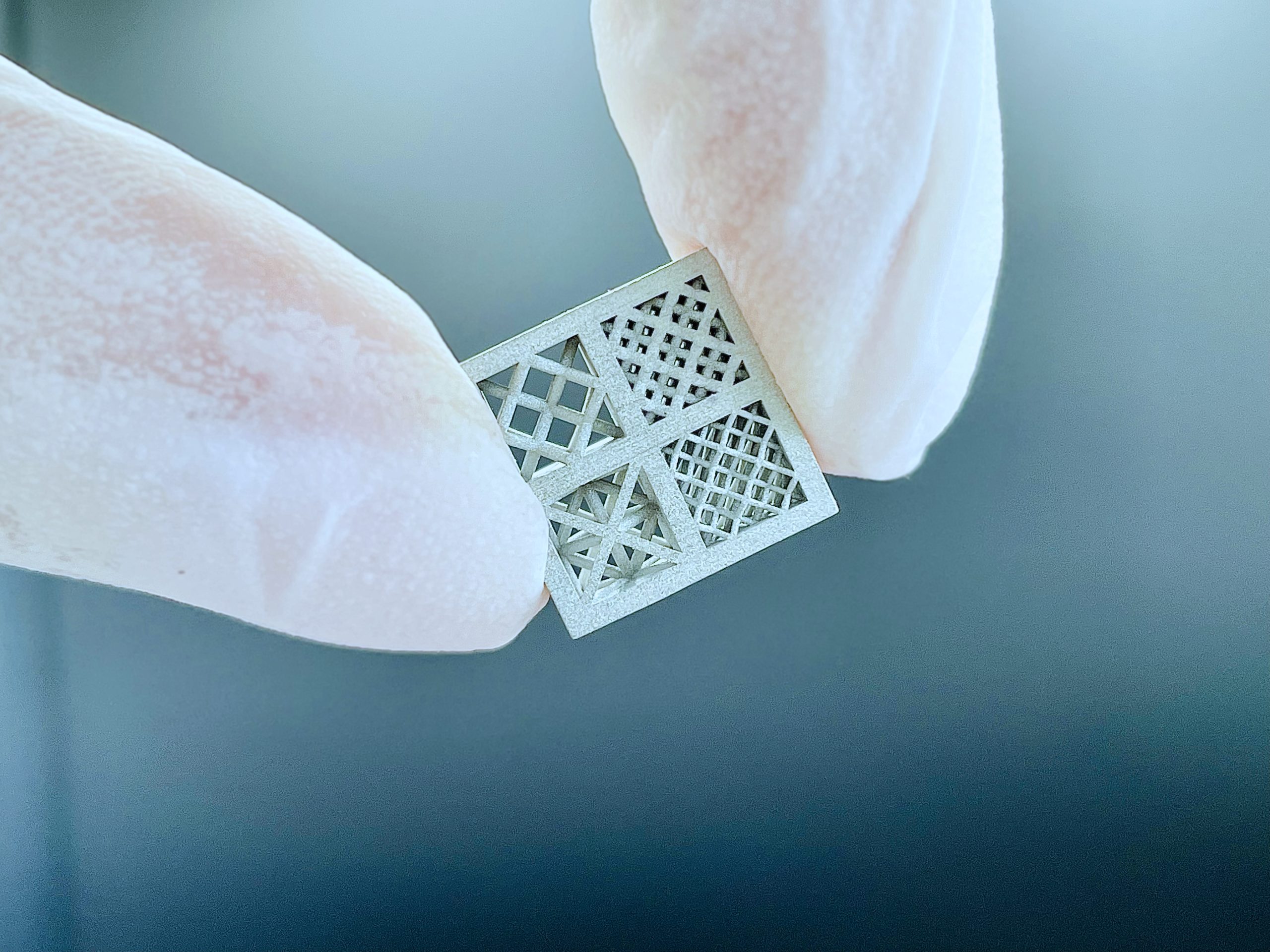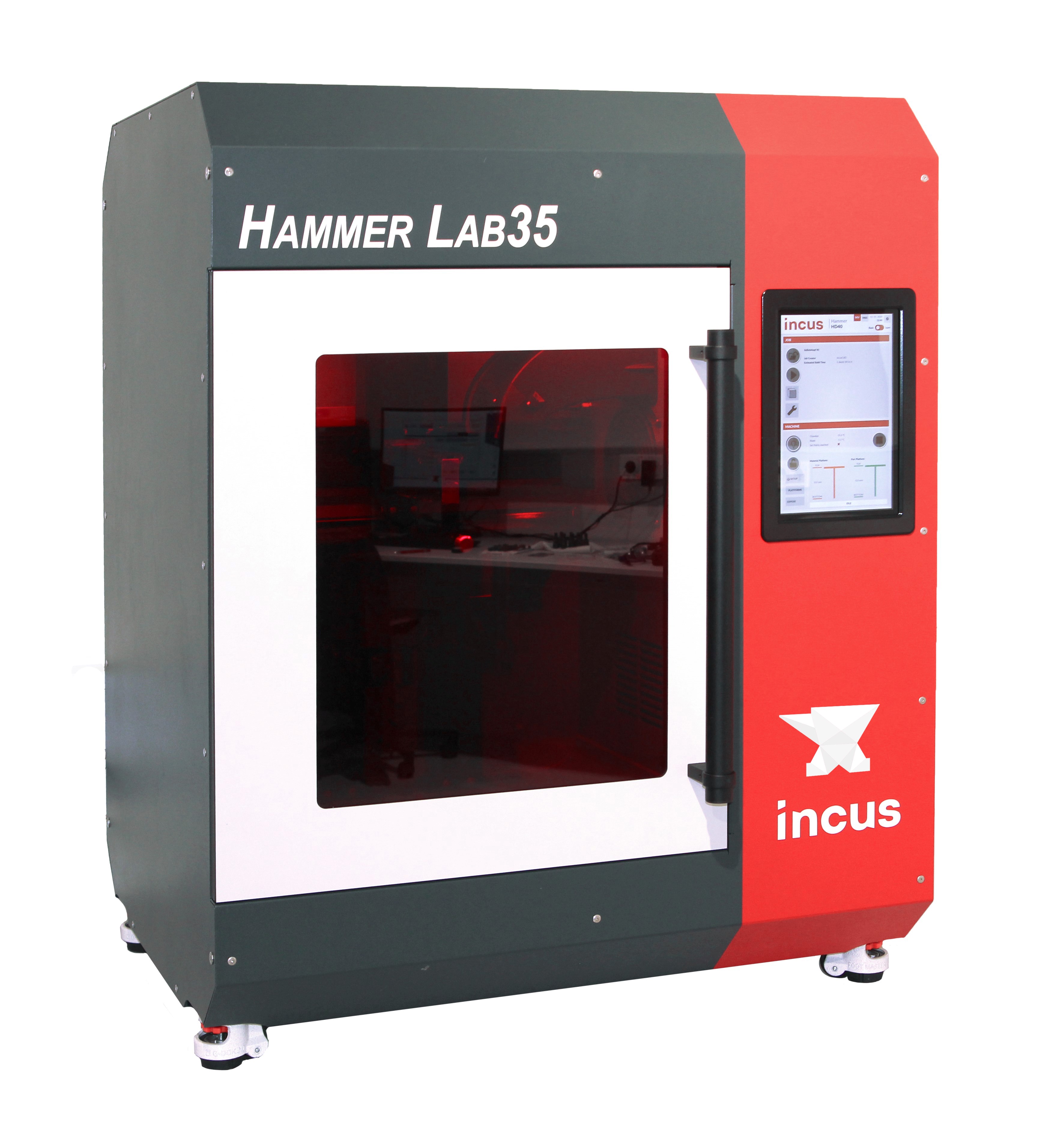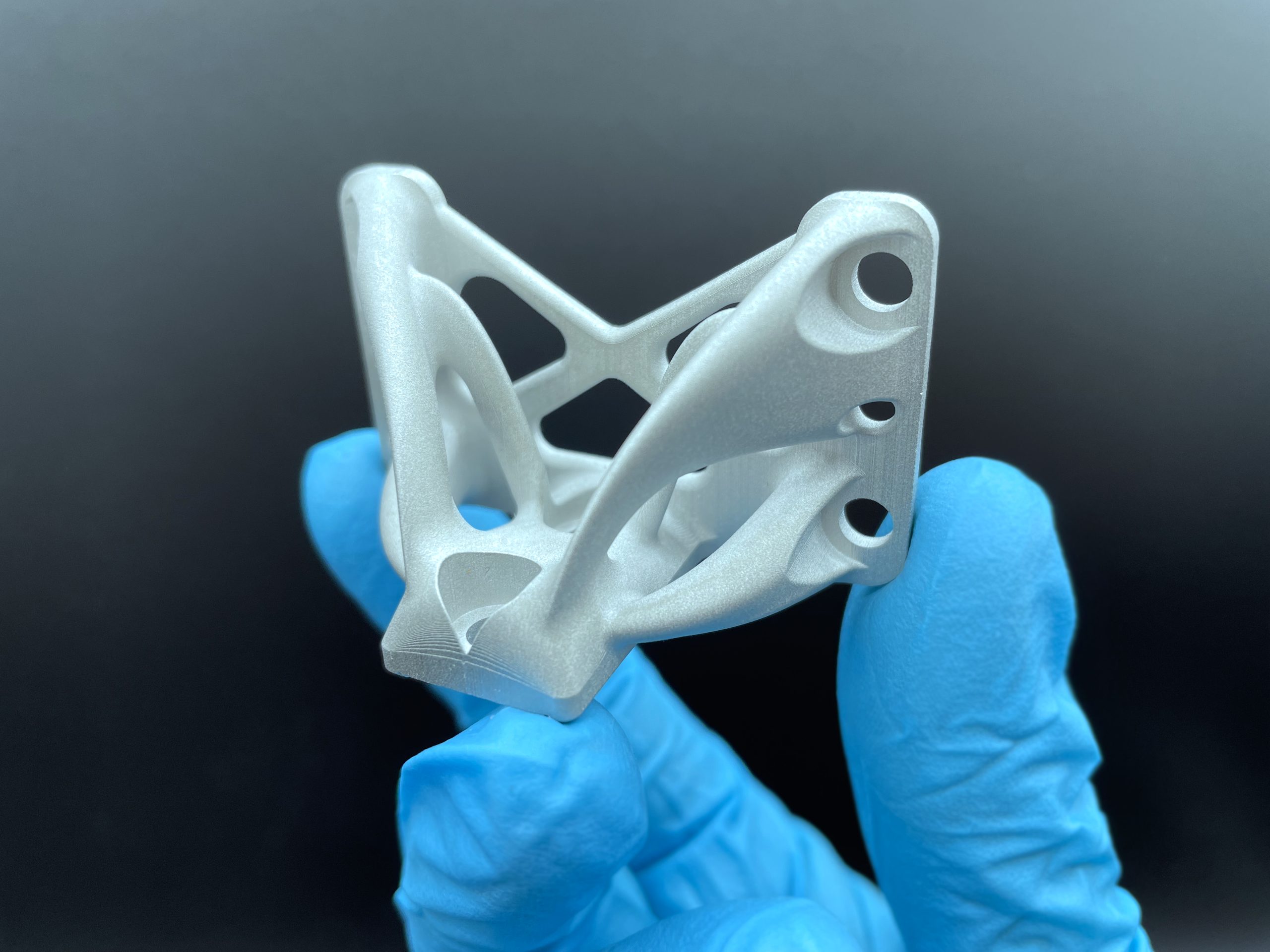The 2021 3D Printing Industry Awards shortlists are open for voting, have your say now.
Incus, an Austrian engineering firm and OEM start-up, has entered into a partnership with the European Space Agency to explore how scrap metals available on the Moon’s surface could be processed for 3D printing spare parts for lunar stations.
Ceramic 3D printing specialist Lithoz and the OHB System subsidiary of German space and technology group, OHB SE, will also participate in the 18-month project. Throughout this time, the partners will jointly develop and test Incus’ lithography-based metal manufacturing (LMM) 3D printing technology within a micro-gravity environment, and assess the feasibility of processing scrap metals available on the moon’s surface to produce high-quality end-use spare parts.
“We at Incus are excited to be a part of a project that will test the capabilities of our LMM technology for use in space,” said Dr Gerald Mitteramskogler, CEO at Incus. “Our solution could be a great fit to meet the challenging requirements of producing parts in such an environment.”

Incus’ LMM technology
Incus was founded in 2019 out of Lithoz’s R&D lab, and is a member of the AM Ventures portfolio, an award-winning investor in 3D printing technologies.
The firm’s LMM technology is based on vat polymerization techniques like stereolithography (SLA) and digital light processing (DLP), but differs from these processes by curing materials that contain metal particles. The subsequent printed parts are then debound and sintered to create solid metal parts. Capable of working with “unweldable” metals, Incus’ technology can process materials containing metal particles as small as 20 µm.
At Formnext 2019, the company launched its flagship metal 3D printer, the Hammer Lab35, which leverages the LMM process. The machine is designed to meet the manufacturing industry’s increasing demand for 3D printing processes capable of delivering intricate geometries for functional prototypes and pre-series manufacturing.
After announcing its first shipment in March 2020, Incus entered series production of the machine at the start of this year and is continuing to grow its customer base.

3D printing spare parts from moon scrap
On Earth, Incus’ LMM process produces 3D printed parts with an “excellent” surface finish and similar material properties to parts manufactured via metal injection molding. Now, through its latest partnership with the ESA, Lithoz and OHB, the capabilities of the process will be explored in a microgravity environment.
Maintaining lunar stations requires a constant supply of goods, research materials and equipment. In addition to this, spare parts are also needed in case individual components fail during missions.
The need for self-sufficiency during such missions has prompted the ESA to investigate the use and reuse of existing lunar surface materials derived from production waste and end-of-life components. Being able to manufacture spare parts for lunar spacecraft and stations both on-board and on-demand using such sources could help to significantly reduce the cost and volume of cargo missions from Earth, while minimizing production waste.
“Out-of-Earth manufacturing is a very interesting topic that is being investigated by the European Space Agency with great effort,” said Dr Martina Meisnar, Materials and Processes Engineer at ESA. “The goal is to refine these manufacturing concepts towards demonstration on Earth and ultimately for implementation in space.”

Incus’ LMM technology was chosen for the project due to its ability to produce spare parts from recycled metal waste. The partners hope this capability could potentially enable the utilization of recycled powders from scrap metals that are available on the moon.
Alongside this, the LMM process uses a paste or suspension as feedstock and does not rely on the use of highly spherical gas-atomized powders or support structures. Instead, the printed components are separated by a demolding process which does not require time-consuming manual reworking and is also safe for the operator.
“Lithographic techniques such as the ones developed by Incus and Lithoz allow the combination of high precision 3D printing with high-performance metals and ceramics, while still remaining extremely resource-efficient,” said Dr Martin Schwentenwein, Head of Material Development at Lithoz. “While these concepts have been successfully demonstrated on Earth, the activities of such projects are crucial for filling technological gaps and enabling the implementation of additive manufacturing in a space environment.”
The ultimate goal of the project is to assess how scrap metals available on the Moon’s surface could be processed via LMM to produce high-quality parts in a zero-waste process. Over the course of 18 months, the partners will explore how the constraints of a space environment, such as potential contamination of metal powder with lunar dust, could impact the printing process.
The project will also evaluate the influence of impurities on sintering and the result of the final microstructure of printed parts, in order to determine the optimal binder quantity and type for the LMM process in microgravity. Through this, the partners will seek to develop a sustainable manufacturing chain in space for spare parts production.
“The possibility of reducing our dependency on Earth by utilizing existing lunar surface materials and recycling lunar base scrap metal represents the only solution to guarantee a sustainable settlement,” Antonella Sgambati, Human Spaceflight System at OHB System.
“This project and this novel LMM process will be important steps in making such a settlement a reality due to the fact that this technology could have a chance to operate successfully in space.”

3D printing with space materials
Multiple national space agencies have increased their interest in additive manufacturing in recent years as they seek to establish a permanent presence on the moon. Asa result, research efforts into how on-site materials such as regolith can be leveraged to produce lunar structures have too escalated.
For instance, scientists from the Technical University of Braunschweig and Laser Zentrum Hannover have explored 3D printing with lunar regolith in zero gravity as part of project MOONRISE, and Texas-based construction firm ICON recently gained a NASA contract to develop a prototype off-world 3D printer capable of printing space-faring structures from regolith.
Elsewhere, Russian space agency Roscosmos has experimented with 3D printing structures made from on-site lunar material and, most recently, a study from mission-critical space system specialist Redwire was launched to the International Space Station (ISS) by NASA. The study aims to determine the feasibility of 3D printing regolith for building lunar structures on-demand.
Subscribe to the 3D Printing Industry newsletter for the latest news in additive manufacturing. You can also stay connected by following us on Twitter and liking us on Facebook.
Looking for a career in additive manufacturing? Visit 3D Printing Jobs for a selection of roles in the industry.
Subscribe to our YouTube channel for the latest 3D printing video shorts, reviews and webinar replays.
Featured image shows a 3D printed part produced via LMM. Photo via Incus.


